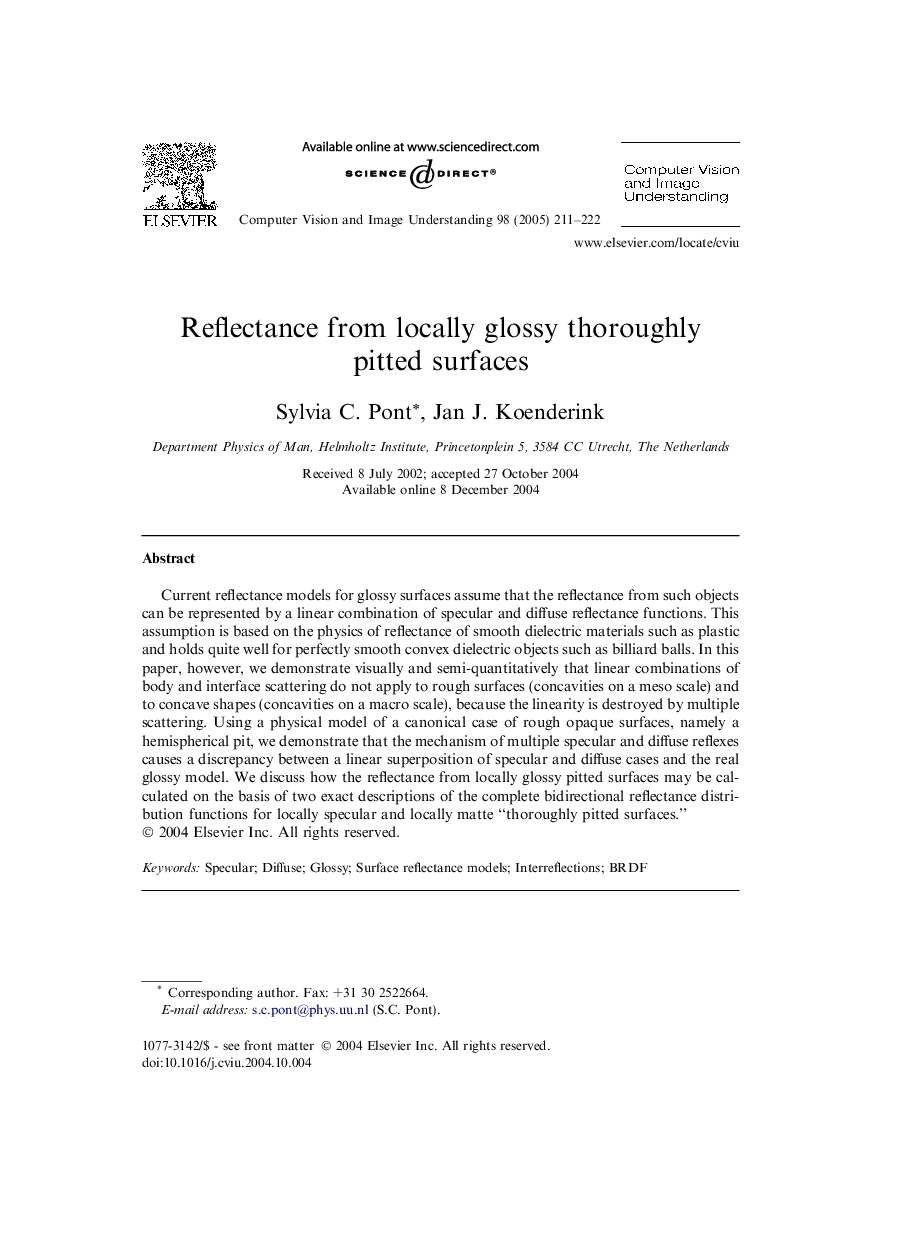| Article ID | Journal | Published Year | Pages | File Type |
|---|---|---|---|---|
| 10359200 | Computer Vision and Image Understanding | 2005 | 12 Pages |
Abstract
Current reflectance models for glossy surfaces assume that the reflectance from such objects can be represented by a linear combination of specular and diffuse reflectance functions. This assumption is based on the physics of reflectance of smooth dielectric materials such as plastic and holds quite well for perfectly smooth convex dielectric objects such as billiard balls. In this paper, however, we demonstrate visually and semi-quantitatively that linear combinations of body and interface scattering do not apply to rough surfaces (concavities on a meso scale) and to concave shapes (concavities on a macro scale), because the linearity is destroyed by multiple scattering. Using a physical model of a canonical case of rough opaque surfaces, namely a hemispherical pit, we demonstrate that the mechanism of multiple specular and diffuse reflexes causes a discrepancy between a linear superposition of specular and diffuse cases and the real glossy model. We discuss how the reflectance from locally glossy pitted surfaces may be calculated on the basis of two exact descriptions of the complete bidirectional reflectance distribution functions for locally specular and locally matte “thoroughly pitted surfaces.”
Related Topics
Physical Sciences and Engineering
Computer Science
Computer Vision and Pattern Recognition
Authors
Sylvia C. Pont, Jan J. Koenderink,
